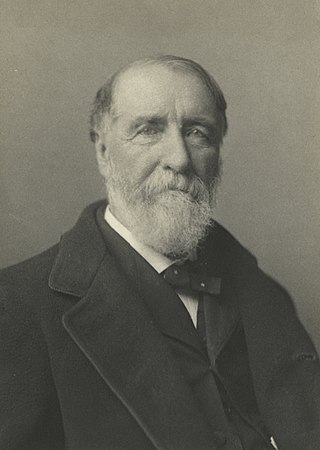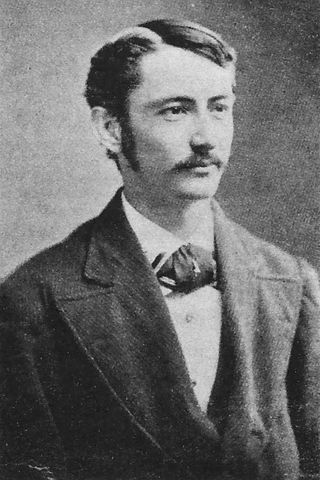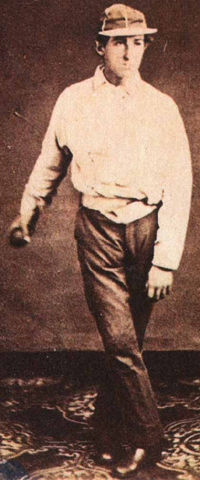Related Research Articles

Henry Chadwick was an English-American sportswriter, baseball statistician and historian, often called the "Father of Baseball" for his early reporting on and contributions to the development of the game. He edited the first baseball guide that was sold to the public. He is credited with creating box scores, as well as creating the abbreviation "K" that designates a strikeout. He is said to have created the statistics of batting average and earned run average (ERA). He was posthumously inducted into the National Baseball Hall of Fame in 1938.

Rounders is a bat-and-ball game played between two teams. Rounders is a striking and fielding team game that involves hitting a small, hard, leather-cased ball with a wooden, plastic, or metal bat that has a rounded end. The players score by running around the four bases on the field.

In baseball or softball, a strikeout occurs when a batter accumulates three strikes during a time at bat. It usually means that the batter is out. A strikeout is a statistic recorded for both pitchers and batters, and is denoted by K in scorekeeping and statistics. A "strikeout looking" — in which the batter does not swing and the third strike is called by the umpire — is usually denoted by a ꓘ.

William Arthur "Candy" Cummings was an American professional baseball player. He played as a pitcher in the National Association of Professional Base Ball Players, and National League. Cummings is widely credited with inventing the curveball. He was elected to the Baseball Hall of Fame in 1939.
The question of the origins of baseball has been the subject of debate and controversy for more than a century. Baseball and the other modern bat, ball, and running games — stoolball, cricket and rounders — were developed from folk games in early Britain, Ireland, and Continental Europe. Early forms of baseball had a number of names, including "base ball", "goal ball", "round ball", "fetch-catch", "stool ball", and, simply, "base". In at least one version of the game, teams pitched to themselves, runners went around the bases in the opposite direction of today's game, much like in the Nordic brännboll, and players could be put out by being hit with the ball. Just as now, in some versions a batter was called out after three strikes.
The Cincinnati Red Stockings of 1869 were baseball's first all-professional team, with ten salaried players. The Cincinnati Base Ball Club formed in 1866 and fielded competitive teams in the National Association of Base Ball Players (NABBP) 1867–1870, a time of a transition that ambitious Cincinnati businessmen and English-born ballplayer Harry Wright shaped as much as anyone. Major League Baseball recognized those events officially by sponsoring a centennial of professional baseball in 1969.
Town ball, townball, or Philadelphia town ball, is a bat-and-ball, safe haven game played in North America in the 18th and 19th centuries, which was similar to rounders and was a precursor to modern baseball. In some areas—such as Philadelphia and along the Ohio River and Mississippi River—the local game was called Town Ball. In other regions the local game was named "base", "round ball", "base ball", or just "ball"; after the development of the "New York game" in the 1840s it was sometimes distinguished as the "New England game" or "Massachusetts baseball". The players might be schoolboys in a pasture with improvised balls and bats, or young men in organized clubs. As baseball became dominant, town ball became a casual term to describe old fashioned or rural games similar to baseball.

James Creighton, Jr. was an American baseball player during the game's amateur era, and is considered by historians to be the sport's first superstar and one of its earliest paid competitors. In 1860 and 1862 he played for one of the most dominant teams of the era, the Excelsior of Brooklyn. He also was reputed to be a superb cricketer, and played in many amateur and professional cricket matches.
The New York Knickerbockers were one of the first organized baseball teams which played under a set of rules similar to the game today. Founded as the "Knickerbocker Base Ball Club" by Alexander Cartwright in 1845, the team remained active until the early 1870s.
The Oneida Football Club, founded and captained by Gerrit Smith Miller in Boston, Massachusetts, in 1862, was the first organized team to play any kind of football in the United States. The game played by the club, known as the "Boston game", was an informal local variant that combined association and rugby football and predated the codification of rules for American football.

The Atlantic Base Ball Club of Brooklyn was baseball's first champion and its first dynasty. The team was also the first baseball club to visit the White House in 1865 at the invitation of President Andrew Johnson.
The Knickerbocker Rules are a set of baseball rules formalized by William R. Wheaton and William H. Tucker of the Knickerbocker Base Ball Club in 1845. They have previously been considered to be the basis for the rules of the modern game, although this is disputed. The rules are informally known as the "New York style" of baseball, as opposed to other variants such as the "Massachusetts Game" and "Philadelphia town ball".
The National Association of Base Ball Players (NABBP) was the first organization governing American baseball.
The following are the baseball events of the years 1845 to 1868 throughout the world.
The Enterprise Base Ball Club of Brooklyn was an American baseball club in the 1850s and 1860s.

The Brooklyn Excelsiors were an amateur baseball team that played in Brooklyn, New York. Formed in 1854, the Excelsior ballclub featured stars such as Jim Creighton, Asa Brainard, and Candy Cummings.
The National Association was a professional baseball league that played during the 1879 and 1880 seasons. While not considered a major league, it operated before the formal establishment of minor league baseball. It should not be confused with the National Association of Professional Base Ball Players, the first fully-professional sports league in baseball, which operated several years prior.

The 1878 Harvard Crimson football team represented Harvard University in the 1878 college football season. They finished with a 1–2 record. The team captain, for the second consecutive year, was Livingston Cushing.
The 1859 college baseball season was the first season of intercollegiate baseball in the United States. The competing systems of rules known as Massachusetts Rules and Knickerbocker Rules were both used in different parts of the country. The season consisted of only four teams and two games, with each game featuring one of the competing systems of rules. No champion for college baseball was determined until 1893, and it would not be until 1947 that the College World Series began.
References
- ↑ "Town Ball : The Rules of the Massachusetts Game". www.baseball-almanac.com.
- ↑ "Vintage Base Ball Association | Rules / 1858". Archived from the original on 2007-01-08. Retrieved 2007-02-13.
- ↑ "VBBA Education and Interpretation Committee". Archived from the original on 2010-07-25. Retrieved 2016-01-20.
- ↑ "OSV - Document Viewer - Doc # 1985". Archived from the original on 2007-03-07. Retrieved 2007-02-28.
- ↑ "Archived copy" (PDF). Archived from the original (PDF) on 2007-08-10. Retrieved 2007-02-28.
{{cite web}}: CS1 maint: archived copy as title (link) - ↑ "The Chronology - 1859 | BaseballLibrary.com". Archived from the original on 2007-02-06. Retrieved 2007-02-24.
- ↑ http://www.williams.edu/home/focus/baseball/ [ dead link ]
- ↑ Wilkes’ Spirit of the Times Archived 2010-07-25 at the Wayback Machine , March 18, 1865
